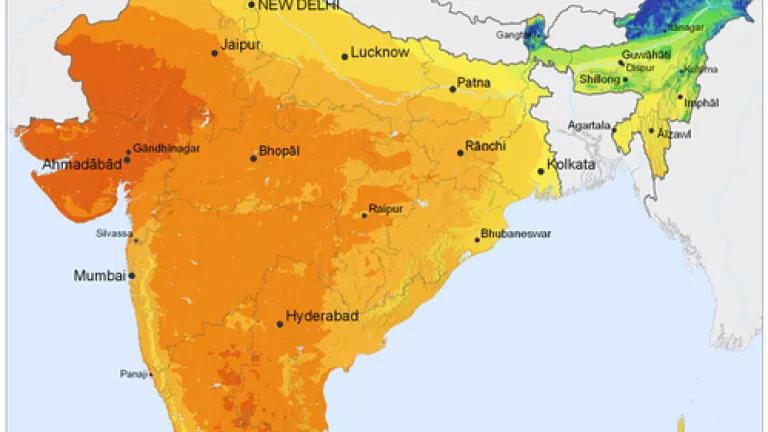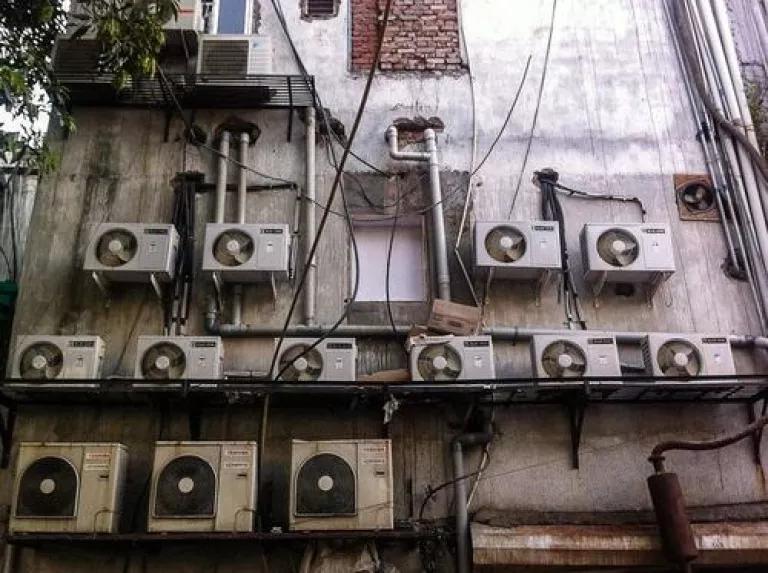India Commits to Accelerate Clean Energy and Climate Action, Clearing Path to Paris Climate Talks

Signaling a commitment to fight climate change, India submitted its targets as a part of the Paris climate agreement. India committed to reduce its emissions intensity by 33 to 35% from 2005-levels by 2030, a long-term commitment to curb its greenhouse gas (GHG) emissions under the United Nations Framework Convention on Climate Change (UNFCCC). Echoing the moral obligation to fight climate change as urged by Pope Francis, India is also formally declaring its climate targets on the birthday of Mahatma Gandhi on October 2 in New Delhi.
India's targets, called Intended Nationally Determined Contributions (INDCs) under the UNFCCC, reduce emissions intensity through clean energy development. India plans to launch new initiatives that prioritize policies for solar, wind and energy efficiency, green infrastructure, and cleaner fuels while attracting climate financing. As a major emerging economy with a growing population, India's strong emissions intensity reduction and clean energy goals are significant gains in the global fight against climate change.
India's targets balance development priorities with climate action that lays the foundation for even bolder action. India is already taking action to build a clean energy economy today and the targets position India to do more in the real world to provide clean energy access and curb climate change. With India's targets, countries that account for at least 80 percent of the world's climate pollution will have proposed specific targets as leaders head to Paris in December, as analyzed by my colleague Jake Schmidt here.
Key features of India's INDC include:
- Unconditional emissions intensity reduction of 33-35% by 2030 based on 2005 levels
- Target of 40% of electricity from non-fossil fuel based energy sources by 2030 with the support of technology-transfer and climate financing
- Climate adaptation strategy of enhancing investments in development programs in sectors vulnerable to climate change, particularly agriculture, water resources, Himalayan region, coastal regions, health and disaster management.
- To create an additional carbon sink of 2.5 to 3 billon tonnes of CO2 equivalent through increasing forest and tree cover by 2030
India has been preparing for months for the proposed post-2020 target. There have been extensive discussions and diverse viewpoints in Delhi. Prime Minister Narendra Modi and Environment Minister Prakash Javadekar are focused on an ambitious and achievable target. India has significantly increased its Copenhagen energy-intensity target. At the Copenhagen climate summit in December 2009, India committed to reduce the emission intensity of its GDP by 20-25 percent by 2020 compared to 2005 levels.
Following India's announcement today, NRDC's President Rhea Suh emphasized:
"India's strong climate plan offers a comprehensive approach to curb the worst impacts of climate change. Its commitment to renewable energy will pave the way to sustainable economic growth that creates jobs, protects natural resources, and provides cleaner air and water for Indian citizens. India now has positioned itself as a global leader in clean energy, and is poised to play an active and influential role in the international climate negotiations this December."
As anticipated, India and other developing countries did not indicate an absolute reduction given the development and energy challenges, and rather focused on growing low-carbon economies. The targets have a central focus on clean energy development. Earlier this year, the Modi government announced 2022 clean energy targets of 175 gigawatts (GW), with 100 GW for solar, 60 GW for wind, 10 GW for biogas and 5 GW for hydropower. Energy efficiency is another major program with significant impact considering that the majority of India's infrastructure that will exist by 2030 has yet to be built. Now is the time to prioritize energy efficiency and lock in energy savings for decades to come.

Renewable energy serves as the foundation for India's emissions reduction strategy. Earlier this year, India expanded its National Solar Mission (NSM) to aim for a target of 100 GW in installed solar energy capacity by 2022, which is five times its previous target of 20 GW. India's solar industry is rapidly expanding in pursuit of the NSM, with its total installed capacity exceeding 4 GW in June, and another 1.7 GW expected by the end of the year.
India's wind energy industry will also play a pivotal role in augmenting its renewable energy capacity. India currently stands as the world's fifth largest wind energy producer, with an installed capacity of over 22 GW. Through its proposed National Wind Mission (NWM), India is hoping to reach a wind energy capacity of 60 GW target by 2022.
India is also taking action to reduce overall emissions intensity and improve energy-efficiency through its National Mission for Enhanced Energy-Efficiency. By 2017, all buildings will be required to comply with India's Energy Building Conservation Code (ECBC), which incorporates energy saving measures into building construction. And while coal and other fossil fuels will continue to comprise a substantial share of India's energy supply, the Government of India is working to integrate energy-efficient practices throughout the industries through the Perform, Achieve, and Trade (PAT) scheme.

To grow the clean energy markets, India is seeking robust investment deals to finance new energy sources. Prime Minister Modi set a solar investment target of $100 billion by 2022 in order to achieve the updated solar installment target. To make clean energy projects more attractive to investors, government officials have been working to incentivize renewable energy investment and eliminate investment barriers. These financing policy improvements have been effective so far, contributing to a 59% increase in renewable energy investment in 2015. The Indian government also quadrupled its tax on coal, now Rs. 200 / metric ton, to help fund renewable energy development.
For India and other burgeoning economies, clean energy finance will prove instrumental in accessing the clean technologies needed to power renewable energy markets and meet India's climate target. As Environment Minister Prakash Javadekar stated, "If both finance and technology are provided, I think many countries can take more aggressive actions."
With India's target, the path to a global agreement in Paris is clearer. To truly solve climate change, the Paris agreement needs to ensure that the targets are a minimum set of actions that drive even greater action. For example, action under the Montreal Protocol to phase-out potent heat trapping gases called HFCs, would lead to even greater climate benefits in the short term.
The Indian government's commitments to lower emission intensity continue to build momentum leading up to Paris. But the environment and people's health cannot be saved by national and international government action alone. Local action by village, city and state leadership along with businesses and financial institutions are critical to winning the fight against global warming. As Mahatma Gandhi once said, "You may never know what results come of your action, but if you do nothing there will be no result."
Contributions by Morgan Capilla, NRDC Stanback Fellow, and Meredith Connolly, NRDC Climate & Energy Attorney
Photo Credits:
Solar resource map of India photo on wikimedia under Creative Commons licensing.
Cleaning solar panels in Rajasthan © Sujith Ravi, CEEW.
Air conditioners in Delhi © Bhaskar Deol, NRDC.
